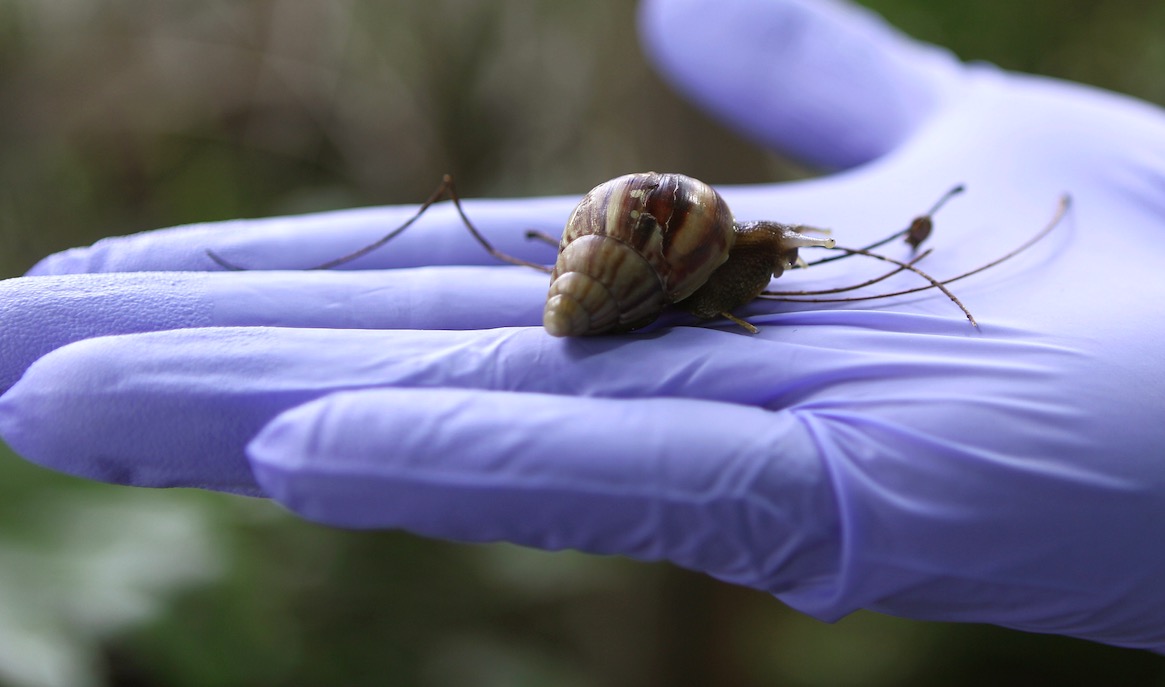From coyotes camping out in Queens bars to giant snails eating houses in Florida to llamas roaming the streets of Phoenix, there’s no shortage of sensational news featuring wild animals infiltrating our cities. But these brilliant ever-adapting creatures are also finding new ways to live among us humans, and some cities are redesigning to accommodate them.
The old way of living with animals meant forcing them out of their habitats so we could build ours, according to Tristan Donovan, the author of Feral Cities: Adventures with Animals in the Urban Jungle. But our relationship with the wild kingdom has evolved. There are populations of creatures coexisting somewhat peacefully with humans — even thriving, like feral flocks of parrots and gangs of urban baboons — yet still a lot of work to do when it comes to animal-human relations.
I talked to Donovan about how skyscrapers can be designed to save migrating birds, how LA’s urban design is forcing mountain lions to inbreed, and why New Yorkers will indeed see more coyotes in their backyards.
Donovan will be here today at 2:30 EDT
to answer all your burning questions about stucco-munching snails, the US’s imminent badger invasion, and those restaurant-frequenting baboon gangs, so ask your own questions in the comments below!
What is happening on a global scale as far as cities and animals right now?
There are two stories about city wildlife. The first and most talked about is how urban expansion destroys habitat for animals. The second story, and the one that Feral Cities is all about, is how some wild animals are adapting to urban life, which appears to be happening more and more across the world.
Do some animals have it better thanks to human urbanisation?
Animals that do well in cities tend to have similar traits. They are sneaky, adaptable, fast breeders that aren’t too fussy about what they eat. So red foxes and coyotes, which have those traits, do well in urban areas. Red foxes live in greater densities in cities and urban coyotes live longer than their rural cousins — probably due to a lack of hunters.
Our behaviour has a huge impact. If people feed wildlife, more can live in the city but fed wildlife becomes less fearful of and more dependent on people and that can have bad consequences for both us and the animals.
People’s attitudes affect things too. Miami has populations of feral chickens and feral peafowl, both of which cause a nuisance. But there’s a city ordinance prohibiting anything being done about the peafowl, even though they aren’t native birds, because we think they are pretty. The chickens, meanwhile, aren’t protected by law but by cultural traditions that mean many people want them to be left alone.

Miami’s Giant African Land snails can grow up to eight inches and love to eat stucco. Photo by J Pat Carter/AP
The perception issue is so interesting — snails, ew, gross, but peacocks, they’re so cute and exotic! Are there any good examples of cities that have been designed around the presence of certain animals?
Unfortunately not. There are pockets of good design but generally little thought has been given to city wildlife. That’s probably because we have spent so long thinking that the urban world is our space alone and that any animal seen in the city is a one-off or lost and in need of relocation.
One thing you touch upon in the book are these populations of escaped pets, like the parrots in LA which end up, um, flocking together. These are not quite the same as wild animals on the fringes of our cities but rather a kind of side effect of globalization. Are we seeing more instances of these imported creatures?
The spread of exotic animals around the world is an increasing problem and cities are often on the frontline of this because that’s where many of these intentionally or unintentionally imported creatures will first arrive. You only need to look at Miami — the climate there makes it pretty easy for exotic pets that have got free or been released to survive and new invasive species do turn up there fairly frequently.
We’ve covered land bridges for migrating animals who need to find their way through cities. What are some particularly good infrastructural ideas you’ve seen as far as integrating the instincts of our feral friends?
The work being done to make new and existing skyscrapers less dangerous for migratory birds is a good one. The Aqua Tower in Chicago for example has exterior terraces designed to make it look more like a cliff so that birds are less likely to crash into it. I also like Berlin’s vision for “coherent greenery” that I write about in the book. The idea is to connect all of its green spaces together — for example, linking parks with cemeteries, cemeteries with canal banks — so that wildlife can move around the city more easily.

The undulating ledges of Chicago’s Aqua Tower, designed by Jeanne Gang, are designed to help birds confused by shiny skyscrapers. Photo by JohnPickenPhoto
In LA, we have the problem of our small populations of mountain lions inbreeding. Can you talk a little about how that is going to become an issue with isolated groups of animals?
The mountain lions in the Santa Monica Mountains are cut off from other populations in the area by the 101 Freeway and LA itself. Being isolated in that way means more fights between lions for territory and more inbreeding, which over time is likely to cause more birth defects and lower chances of survival.
Red foxes had a similar experience in 1930s London. The city exploded in size and populations of foxes ended up surrounded by development. The difference is that red foxes could adjust to city life, whereas mountain lions are ill suited to urban areas and almost never venture beyond the very edge of cities. There are efforts to raise money to build a bridge that the lions can use to travel over the 101, so hopefully that will work out and help address the problem.
Obviously it depends on the animal but what is the best land-use scenario for feral creatures? Shouldn’t we live in vertical cities that leave more land to nature? Or is the big city the problem, and animals would fare better in more sprawling suburban communities?
Suburbia is better for wildlife than inner cities. There’s more greenery, less traffic and more variety of habitat types. In fact there’s evidence that the diversity and abundance of wildlife can be better in suburbia than the surrounding countryside due to factors like agricultural practices and the urban heat island effect. I think that demonstrates that there are ways we can plan new developments and adapt existing areas to be more wildlife-friendly.
Turning cities into dense skyscraper hubs sounds terrible. We all know the social consequences of shoveling people into tower blocks and projects, and it won’t necessarily help animals either. More towers increase the risk of migratory birds crashing into them and getting rid of suburbia might reduce rather than increase wildlife diversity.
What’s more, it won’t free up as much land as you might think. We tend to overestimate how urbanized the world is because that’s where most of us spend most of our time. For example, the UK is a much more densely populated country than the US and it began urbanizing earlier. Yet only 6.8 per cent of land in the UK is built upon and that figure includes every road and rural building — not just the conurbations.
http://twitter.com/zaibatsu/status/582899019573301248/photo/1
You talk about coyotes in LA but how about coyotes in NYC? Probably not unprecedented but people seem to be really getting worked up. Is this the kind of thing we’re going to see more of? Really unexpected animals in our cities?
New York’s catching up on coyotes, really. Coyotes have been in other US cities for years but it seems like it’s only in the past couple of years that the New York City coyote population has reached a level where they are getting spotted regularly. If anything, the fact that coyotes weren’t in NYC earlier is odder than having coyotes living in New York.
Coyotes have a dismal reputation but I don’t think people should get too worked up about it. Coyotes haven’t caused major problems in cities on the whole. They might attack small pets, especially if those pets are left in enclosed yards with nowhere to escape to, but given New York’s cold winters and apartment living, I think New Yorkers have less to worry about on that front than most cities with coyotes.
Should we expect more unexpected animals? Probably. There’s not much evidence to support the idea that bears, wolves and mountain lions will move into cities like coyotes have, but we might see more medium-sized animals like badgers or javelinas. The European badger is already in British cities for example, so maybe the American badger will follow suit.
What is the most shocking documentation of the feral animal-urban life juxtaposition you’ve seen in recent years?
There’s so many. Snakes hanging out in hot tubs, bears stealing dumpsters, giant lizards living in the ceiling of the Thai parliament, but I think the Cape Town baboons that I write about in the book are definitely up there. They have broken into homes, raided cars, joined queues at soup kitchens and even turned up at an outdoor restaurant to grab food off the plates of diners.
Top image: A famous mountain lion in Hollywood. Photo by Steve Winter/National Wildlife Federation
